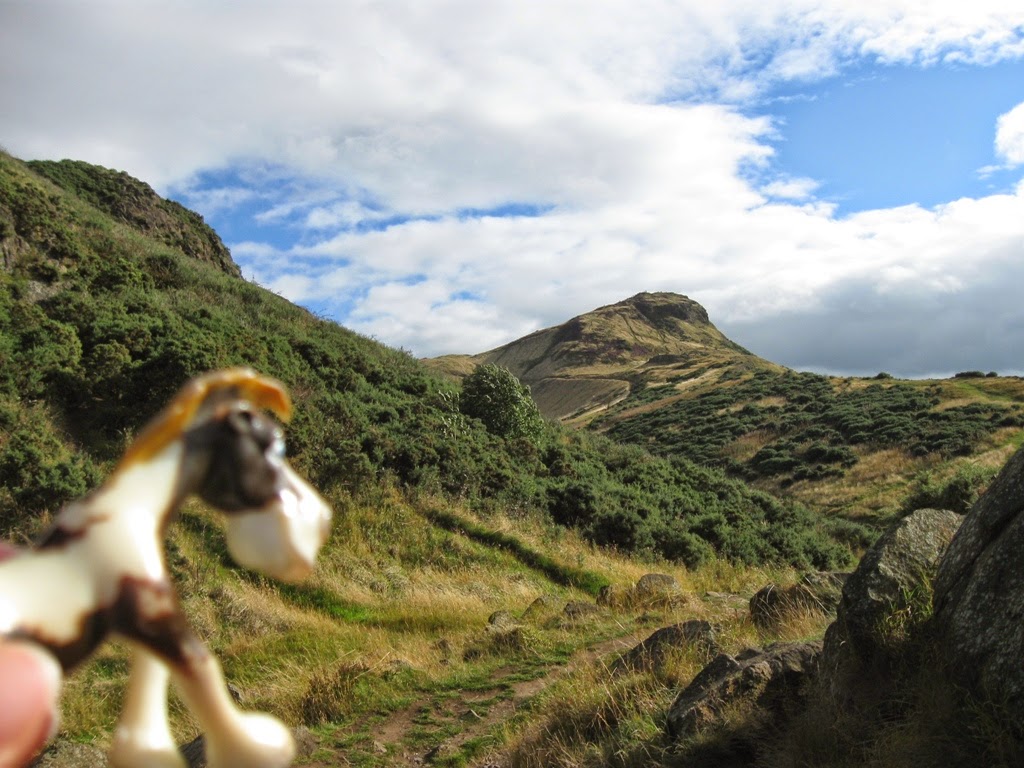Today we will start a journey through a new country. Edinburgh is the capital and second biggest city in Scotland. The historical districts of Edinburgh are a UNESCO World Heritage Site.
Obviously, Scotland is part of the United Kingdom but it enjoys some autonomy that is visible amoung others through the Scottish parliament. It was established back in 1437 but after the union with England in 1707 it was dissolved. It was reactivated only in 1999, therefore the building of the parliament is very modern.
Obviously, the Queen also has an official residence in Scotland. It is the Palace of Holyroodhouse. In its current shape, the palace was built in the seventeenth century.
The main street of the Old Town of Edinburgh is called Royal Mile. It links the Holyroodhouse Palace with the castle. It is walled by nice residential buildings.
In one of them lived John Knox, the leader of protestant reformation in Scotland.
And here comes the Canongate Kirk, the parish church of the palace and the castle. The wedding of Queen's granddaughter Zara Philips took place here.
I must notice however that officially, the main church in Scotland is the St. Giles cathedral.
Pretty close you will find another type of temple, more typical for our times - the seat of the Royal Bank of Scotland.
Edinburgh is known for its connections with culture. Many famous festivals take place there. It was also the birthplace or the residence of many famous writers. Including sir Arthur Conan Doyle, the father of Sherlock Holmes ...
... the famous poet sir Walter Scott, commemorated via a gigantic monument ...
... and Ms. J.K. Rowling (not yet a lady), the mother of Harry Potter.
Now that we walked down the Royal Mile, we finally reached the most famous symbol of the city - the Edinburgh castle, located on the Castle Rock.
Its construction began back in the twelve century. The castle was a royal residence until the Union of the Crowns in 1603. In this year the Scottish king Jacob inherited the English throne.
Today, the castle still has a military role, although it is mainly ceremonial and administrative. Some parts of the castle house also military museums. Let's take the main entry to the National War Museum.
And here comes the Scottish National War Memorial, dedicated to soldiers who have left their lives on the fields of World War I.
In the yard we need to pay our respects to Earl Haig, field marshal during World War I.
Since the castle is located on a hill, I will be able to show you the panorama of the city as well as our last point of interest in Edinburgh - the hill called Arthur's Seat. Its name is obviously a reference to legends of King Arthur.
To arrive on the top of the hill, we need to pass through the Salisbury Crags, a series of 46-metre high cliffs.
Luckily, climbing here is pretty easy.
In the past, the hill did accommodate some buildings that nowadays are just ruins.
So the biggest attraction of the place is obviously the view from the top. Finally we made it.
Our reward was a fantastic panoramic view of Edinburgh.
Here in the middle you can see the castle again.
Time to get back to the Old Town again. Let's not forget to say hello to Greyfriars Bobby, the most faithful animal of Scotland.
Now I think that we have deserved some rest. Let's choose a pub. I was first thinking of this one ...
... but then I realised I could not turn down this offer. It seems they are really experienced and know their stuff. Hopefully they accept bachelors too.
Let's sip a good old beer. I propose we stay here until evening to admire the fireworks scheduled today in the Edinburgh castle. They promisd to be splendid.
And so they were!



























No comments:
Post a Comment